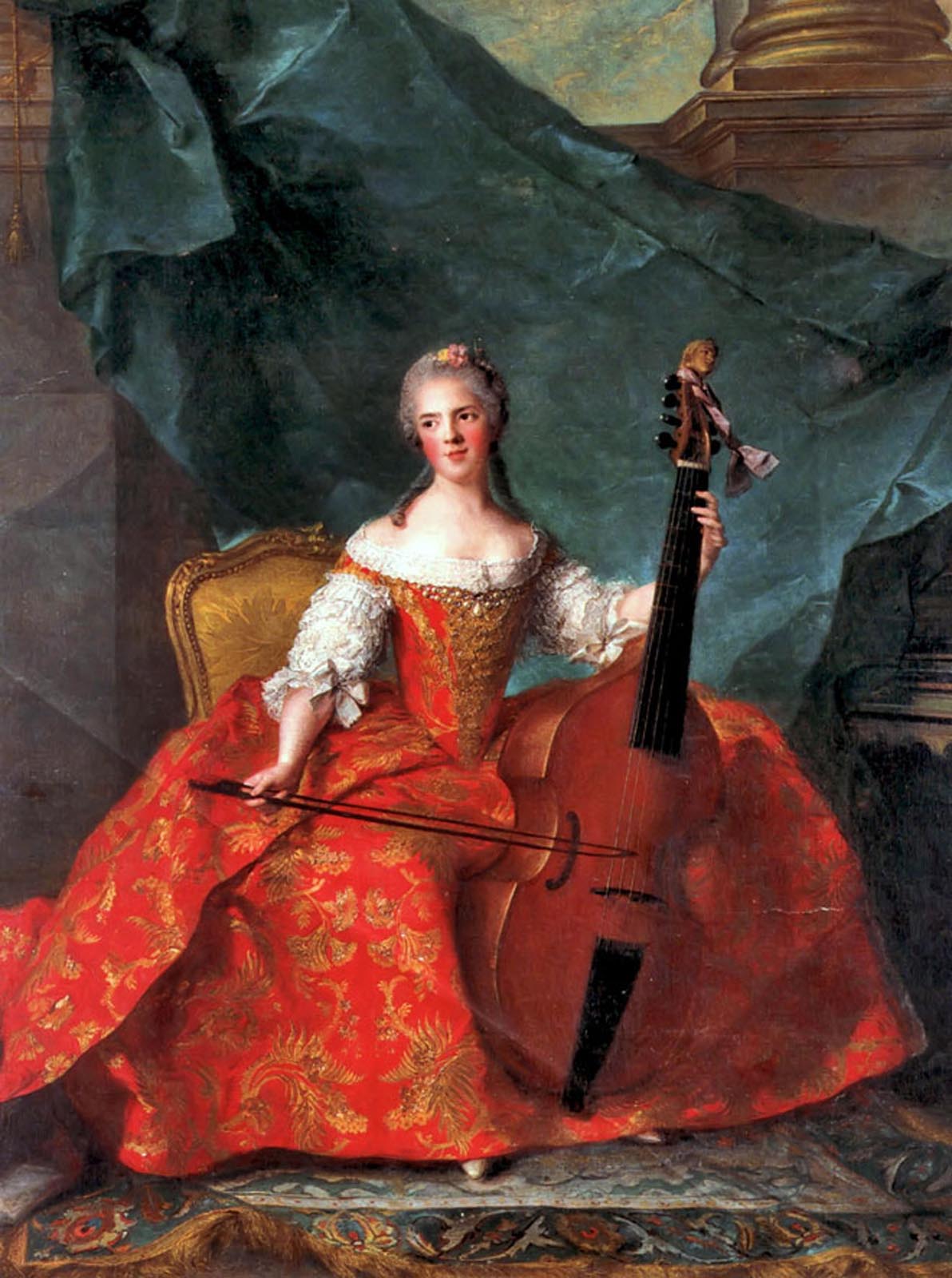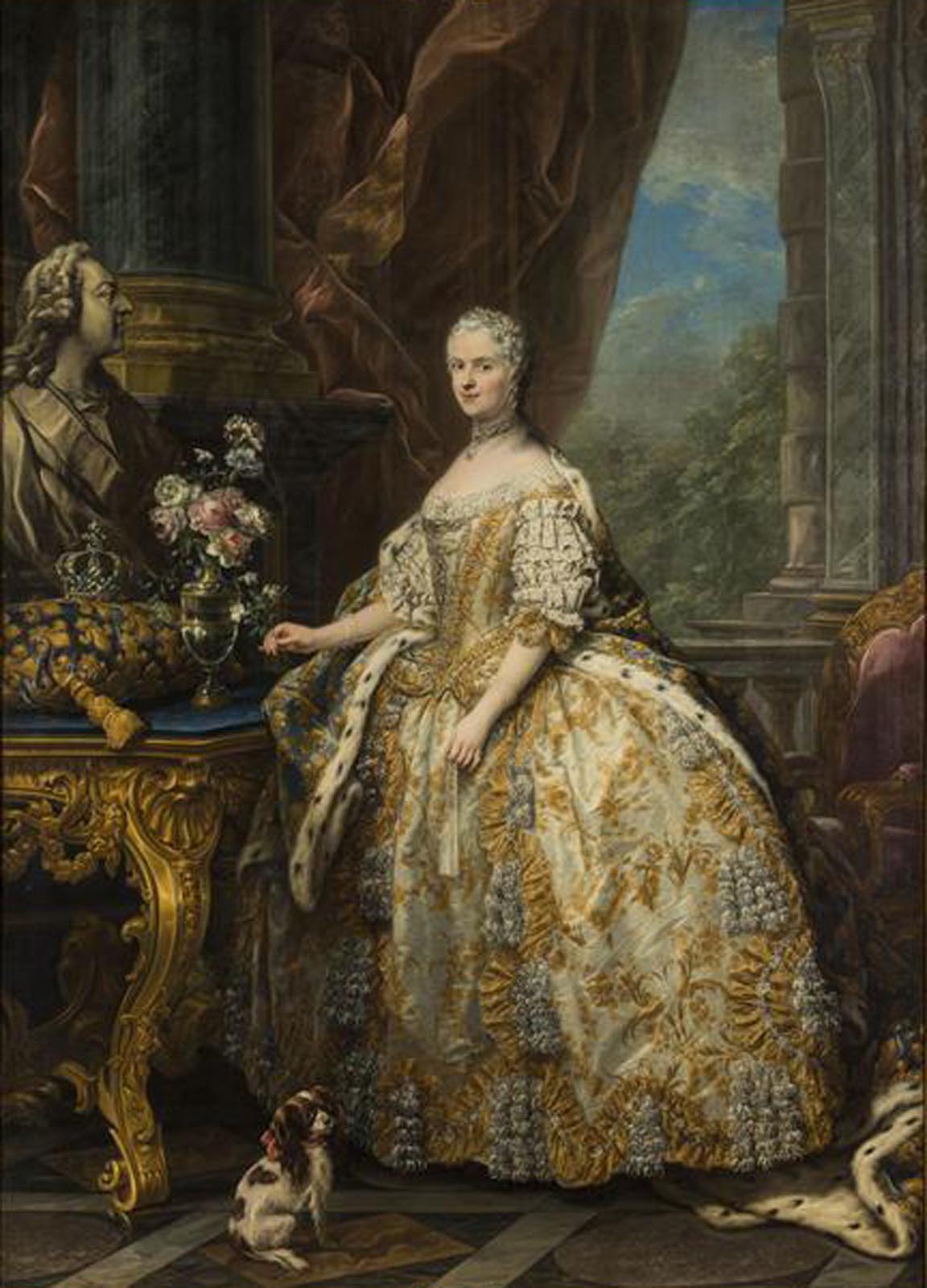At the French court, music was an everyday feature. It accompanied ordinary and extraordinary life, religious services and royal entertainments, enhancing the splendour of public ceremonies or relaxing sovereigns and courtiers in private. It served as both an entertainment and an important political tool, consolidating the authority, prestige and status of the Monarchy. To this end, the French court kept the required number of musicians and appropriate music.
Between the reigns of Henri IV and Louis XVI the role and practice of music changed considerably. The grand royal parades with the Musique de l’Écurie were very different from the chamber concerts organised in Marie-Antoinette’s private apartments.
The structure of royal music

Louis XIII and particularly his son Louis XIV completed the framework for court music. The heyday of royal music was during the reign of the Sun King, and its structure changed little between 1682 and 1761, lasting until the Revolution. In 1715, there were around 200 singers and instrumentalists at the Maison du Roi comprising the Écurie, Chapelle and Chambre orchestras. All three ensembles organised music for everyday entertainment, official spectacles and special ceremonies under the supervision of the Menus-Plaisirs department which handled Court logistics and administration.
Under Louis XIV, the Chambre-Chapelle-Écurie ensembles were relatively distinct, but they eventually merged in 1761.
Throughout the 18th century the number of royal musicians continued to increase until Louis XV and Louis XVI stepped in to control of what had become astronomical budgets, via royal decrees in 1761 and 1782. On the brink of the Revolution, the King’s music was drastically reduced, Versailles housing only church musicians. Court concerts and spectacles were entrusted to Paris theatres.
La Musique de l'Écurie
This orchestra’s role primarily involved accompanying equestrian shows, carrousels, processions, royal entrances and outdoor festivals. In the early 17th century the Musique de l’Écurie was in great demand, and performed at races, ballets, operas, and accompanied returns from the hunt and even walks through the palace grounds. It became independent in the late 16th century, and separated into sections: high instruments (the trumpet, oboe, sackbut, cornet and violin), the Hautbois et Musettes de Poitou, the fife and drums, and the cromorne and trumpet marine.
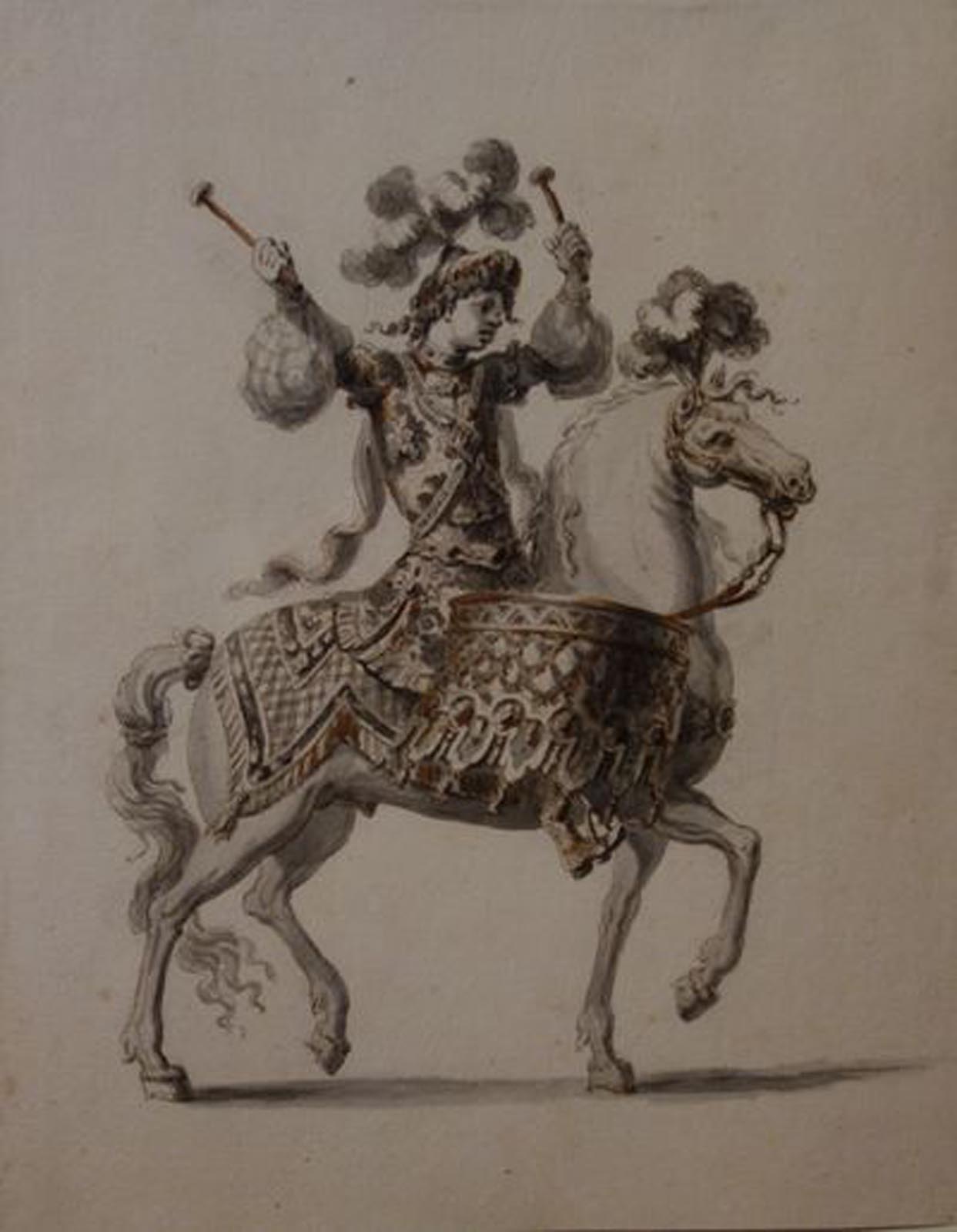
Changing tastes and practices and improved craftsmanship had a considerable effect on the overall sound of instruments. By the 18th century the Musique de l’Écurie sometimes featured only trumpets and kettledrums plus a few oboes and bassoons.
The musical ensemble gradually became less independent, the full orchestra only playing at exceptional events. Manuscripts describe the 17th century musical style as limited in tonality and tessiture, beset by technical difficulties due to the cumbersome and still rudimentary instruments.
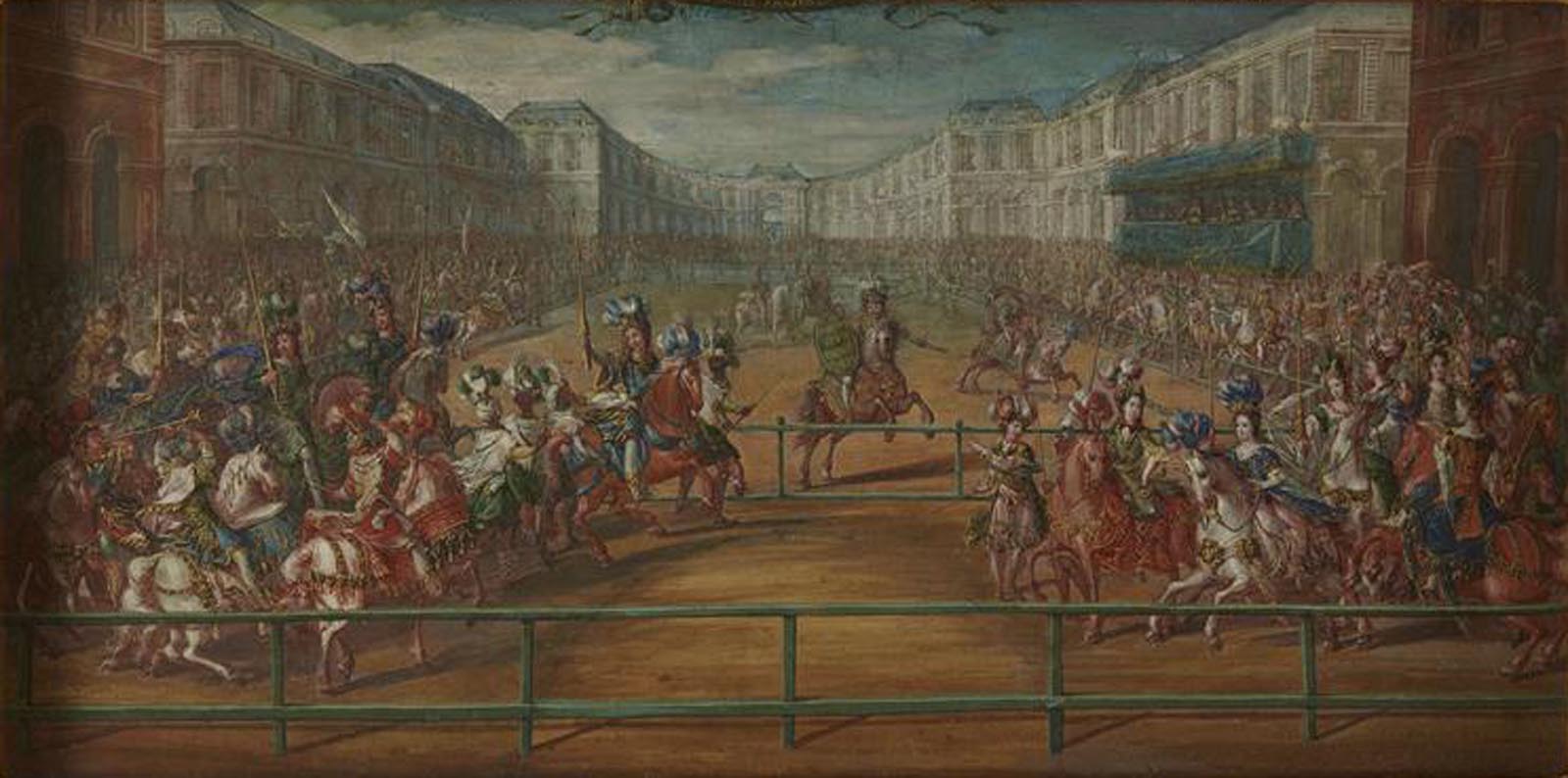
La Musique de la Chapelle
This orchestra dated back to the first Merovingian kings and played at numerous weekly church services. It was run by the Chapel Master, a member of the clergy and two or four Sub-masters, with priests singing plainchant and secular musicians playing motets and at Mass. Organists were held in particular esteem. All its members were male, barring exceptions ordered by the King.
Masses performed in the original Louvre and Versailles chapels involved small vocal ensembles and a few instruments, the move in 1710 to today’s Royal Chapel meant considerably more executants, which rose to about a hundred towards the end of the century.
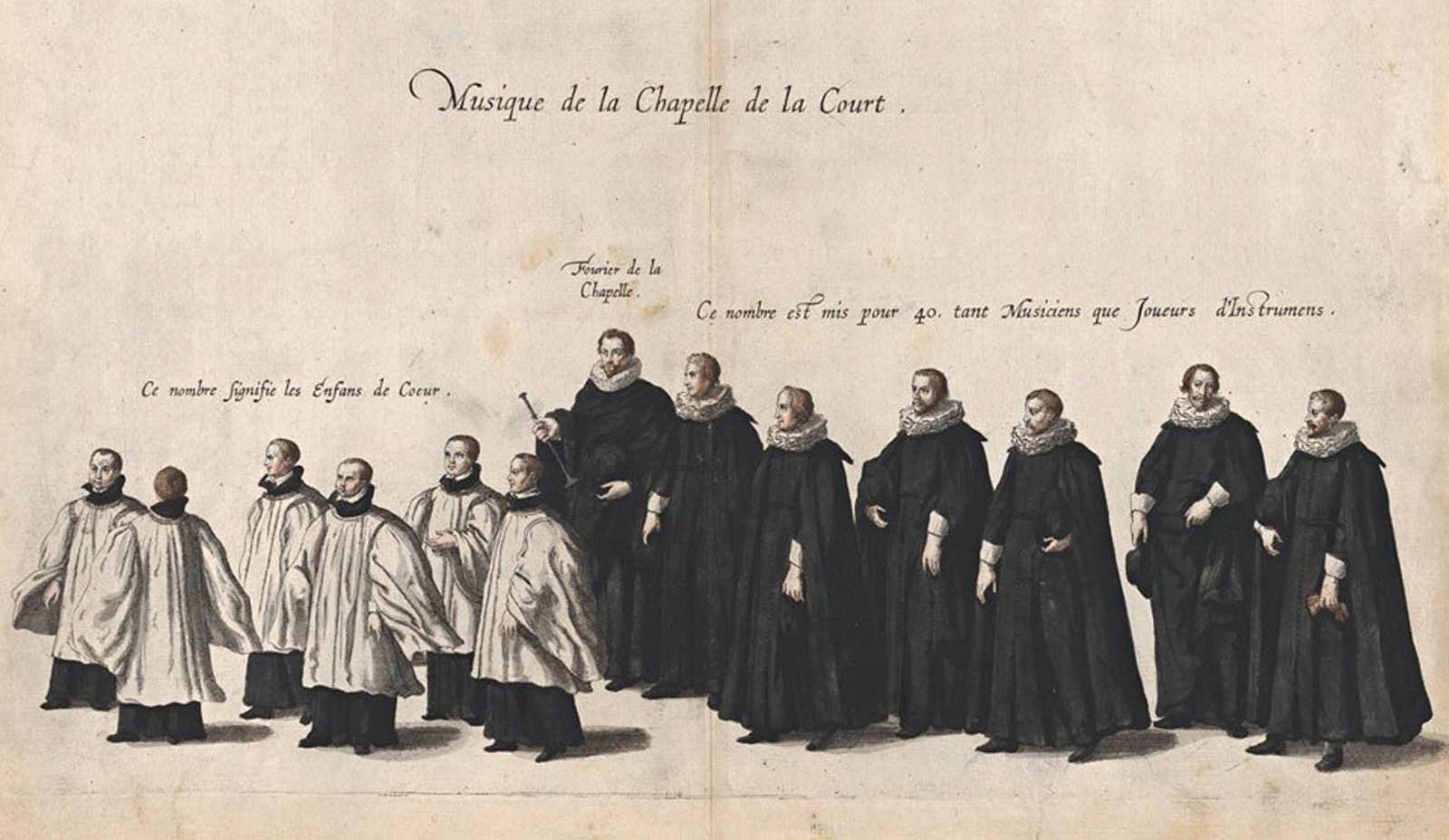
The 17th century saw a change in vocal composition - 5-part choral music, unique in Europe, became the norm until the Revolution. The high voices (dessus), comprising those of children (Les Pages), falsettos and castratos were backed by the hautes-contre, tenors, basses-tailles and bass. Women sometimes sang solo parts. Only about ten members of the Musique de la Chapelle would accompany the king when he travelled. On grand occasions (coronations or weddings) they were joined by musicians from the Chambre and Écurie and even from the Académie Royale de Musique. The continuo provided by the great organ and its contrasting effects added a distinctive touch, reducing the role of the middle string section.
Under Louis XV, the orchestra became more independent. The violins were given a more autonomous role, accompaniments became more dynamic, while the continuo focused on functional harmonies. The bassoon was popular at the time, as in secular music, while the oboe, horn and clarinet made an appearance. The trombone featured only occasionally.
La Musique de la Chambre
This orchestra dates back to François Ier, who distinguished private entertainment from public parades and ceremonies. It was run by the Grand Chamberlain and delegated to royal valets (the Premiers Gentilshommes) from the upper nobility who served for several years. Two Superintendents, two music masters and two composers directed the ensemble which included male and female choristers and solo singers, a children’s choir (Pages), solo musicians from the Cabinet (lutenists, violinists, flutists and viola players), and a host of tutti instrumentalists. The Musique de la Chambre adapted its ensemble – chamber concerts for 1-5 players, medium-sized vocal and instrumental ensembles for private concerts (10-50 musicians), or larger ensembles for public balls, ballet, comedies and operas (when up to a hundred musicians might be required).

Instrumental music for court entertainment involved the Vingt-quatre Violons du Roi (the Grande Bande) or the Petits Violons (the Petite Bande). The former played at major concerts while the Petits Violons played at less official events. The Petits Violins or Cabinet ensemble formed the orchestral base of the Musique de la Chambre which was run by Lully from 1653. The court Superintendent preferred it, as it was less bureaucratic than the Vingt-Quatre Violons du Roi. The Petits Violons numbered up to twenty strings, almost always accompanied by flutes, oboes and bassoons. The ensemble was dissolved on the death of Louis XIV. The Musique de la Chambre was unwieldy and difficult to run, but it was of proven artistic merit, enjoying consistency forged by the real sense of community that reigned, as it was chiefly composed of families of musicians who had served the Crown for three or four generations.
Concerts as royal entertainment and political tool
When the court moved to Versailles in the early 1680’s, concerts acquired the status of official entertainment with a powerful social function. Until then designed for small gatherings with modest monodic or polyphonic airs and solo instrument repertoires, concerts had been fashionable, not political. Under its veneer of pleasant semi-private entertainment, Versailles concerts became a real political tool with a strong impact. They became the model for public concerts, turning the France of Enlightenment into the capital of European music.
“Nowadays there are a thousand people who know about music for every one in the time of Louis XIII. No large town gave public concerts at the time, even Paris: the Vingt-Quatre Violons du Roi was all France had in the way of music.” This was how Voltaire summed up the changes in musical practices in the early 18th century.
At the royal court in 1682-1683, concerts were an established routine. The King’s musicians gathered every Wednesday, Friday and Sunday to play ‘grande musique’, and every Tuesday and Thursday to play ‘petit musique’. They followed the King on his frequent travels, notably to Fontainebleau.
This tradition barely changed until the King’s death, and blossomed again when the Court returned to Versailles in 1722. Paris enjoyed its first public concerts when Anne Danican Philidor established his Concert Spirituel society in 1725.
The concerts at Versailles, which served as model for the capital, thankfully kept up the momentum. Louis XV’s wife, Queen Marie Leszczynska, perpetuated the tradition of the Sun King, putting on concerts which were to reach incredible heights. In the latter half of the century, the King’s favourite Madame de Pompadour, Dauphine Marie-Josèphe de Saxe and Queen Marie-Antoinette followed suit, perpetuating the culture of entertainments dreamed up by Louis XIV.
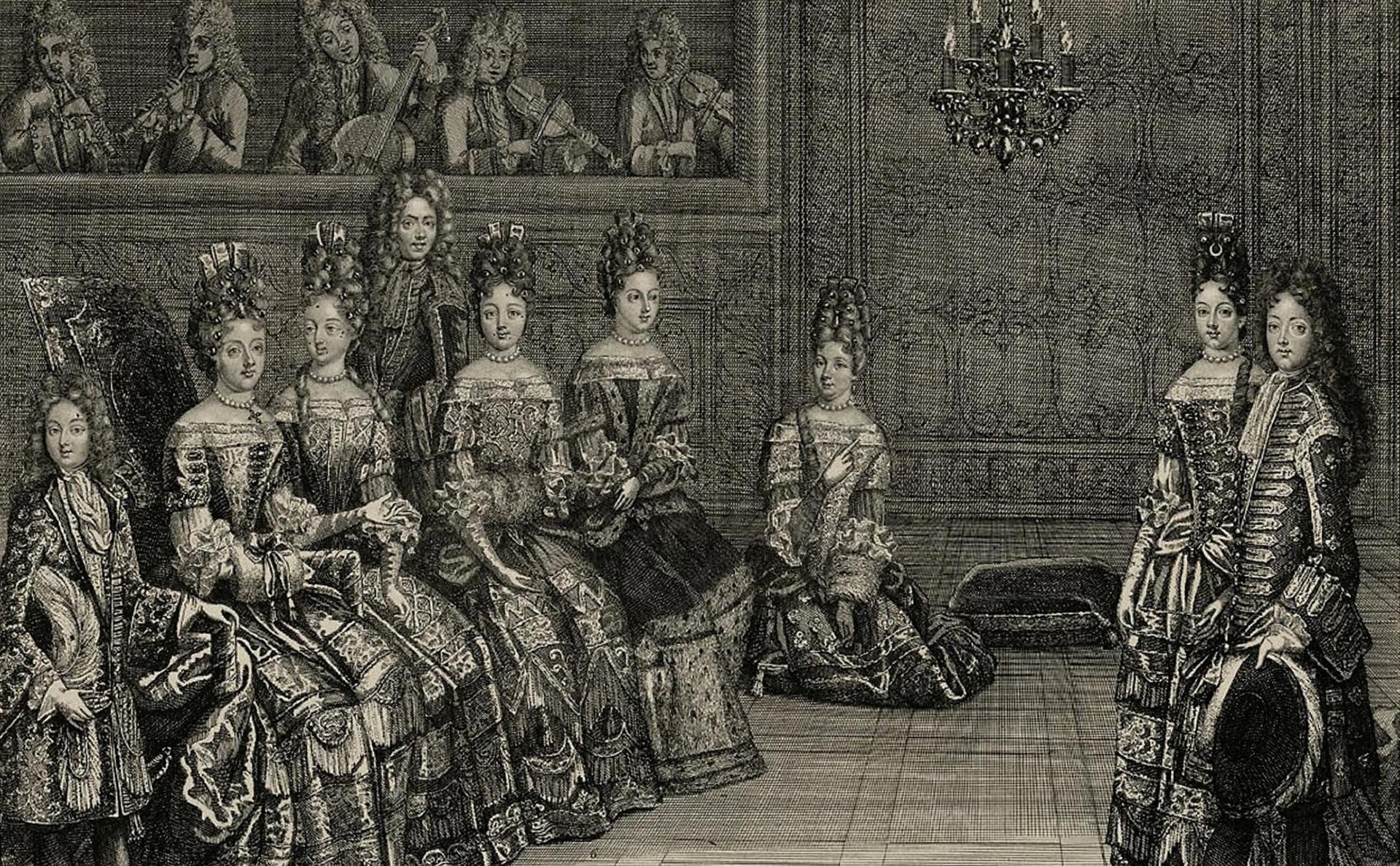
The reign of Louis XIV
For a whole century concerts were held in the town of Versailles, mainly in the King and Queen’s salons. Private concerts were held in the royal apartments three times a week from All Saints Day till Easter. To house the King’s music, two galleries were built in the spacious Salon de Mars which became the nerve centre of court life. It was where most of the concerts were held, as well as balls and dinners. Towards the end of his life, the King often had his musicians perform in the Trianon. Concerts were also held at the residences of Madame de Maintenon or the Duchess of Burgundy. Music accompanied almost every meal, where a few Musique de la Chambre soloists discreetly played. Musical entertainments were also staged in the palace grounds in fine weather.
In Versailles modest concerts without costumes or decor were performed, created by poets and musicians, often pastoral in tone and full of royal allegory. The King’s musicians specialised in this genre, with pieces called ‘idylle’, ‘divertissement’ ‘fête’ or ‘impromptu’, such as Les Fontaines de Versailles by Lalande (1683). Tragedies, pastoral operas and ballets were also performed, but because of their length they stretched over several evenings.
Chamber music (suites, sonatas and cantatas) was heard as well as grand opera. Lambert, Marais, Forqueray, d’Anglebert and François Couperin composed some of their finest works for this specific court entertainment.
The Queen’s concerts
During the reign of Louis XV, the concerts organised by his wife Marie Leszczynska were the Court’s most important musical activities. Throughout the year two or three concerts were performed each week. The protocol was essentially that of Louis XIV. The hour long session was compulsory for privileged guests. In Fontainebleau as in Versailles, the Queen often listened to the concerts from her bedchamber, dispensing with formal attire. Later weekly concerts were held in the Salon de la Paix and other venues such as the Salon d’Hercule (mainly balls). In the summer the palace grounds with its shrubbery served as a stage for impromptu concerts, as in the time of Louis XIV.

The Queen’s repertoire was essentially opera excerpts (one or two acts at a time) run by a series of Superintendents. Lully stood head and shoulders above the other names in opera. Rameau was personally invited to conduct his works (Hippolyte & Aricie in 1734 and Castor & Pollux in 1738). Excerpts were embellished by virtuoso ariettas or cantatas. Budding talents were often heard, some going on to achieve fame at the Académie Royale de Musique.
The Dauphine’s concerts
Passionate about music, Marie-Josèphe de Saxe, the Dauphin’s second wife, enjoyed the Queen’s concerts when she moved to Versailles in 1747. Her pregnancies meant she was unable to follow the Court on its travels. To indulge the Queen and the Dauphine with daily entertainment, the Musique du Roi hired extra musicians for a temporary ensemble in Versailles. Marie-Josèphe de Saxe was more receptive than the Queen to the new operas by Mondonville or Rameau. She liked Italian and German music even more, and introduced to Versailles the music of her birthplace Dresden. She caused a sensation by programming la Faustina, Hasse and Farinelli.
Royalty embraces music
The Kings, Queens and Princes of the Ancien Régime used the Arts as a political tool to construct an identity for the Kingdom. They did not just enjoy and support the Arts, they often practiced them with talent and enthusiasm. Louis XIII danced well, had a splendid bass voice, played the lute and guitar and composed music. Louis XIV was an excellent dancer like his father, performed on stage with professionals, and tried his hand at making music. Philippe d’Orléans was also a champion of the Arts and wrote fine compositions, including the opera Penthée.
Music, a family affair under Queen Marie Leszczynska
During the reigns of Louis XV and Louis XVI, the tradition of musical Kings was broken but the women took over. Louis XV respected the ceremonies established by his great-grandfather but his interest in music was half-hearted. The Queen, however, revived music at Court and initiated regular concerts (‘les concerts de la reine’).
Although not a consummate musician (she did play the harpsichord and vielle, and could sing), she transmitted her love of music to her children who turned out to be very gifted. Daily music sessions were held in the royal family apartments.
The Dauphin played the harpsichord and violin and had a lovely basse-taille voice, and his wife was an accomplished harpsichordist. All eight daughters played at least one instrument: Victoire played the harpsichordalmost as well as her masters and studied the violin, musette, guitar and bass viol. Henriette played the viola, and Adélaïde was an accomplished violinist.
The Princesses and their brother formed an excellent little orchestra and gave concerts. Many musicians dedicated their compositions to them. Sometimes the Princesses joined professional ensembles to play in symphonies.

Madame de Pompadour, favourite of Louis XV
In the 1750’s music often resounded in the residence of Dauphine Marie-Josèphe de Saxe, who was an excellent harpsichordist, capable of tackling even the hardest pieces. Her daughter Clotilde played the guitar. Madame de Pompadour was a leading muse in Versailles. She was a singer and harpsichordist, and in 1747 she set up her own theatre in Versailles (the Petits Appartements) which performed comedies and operas from the Académie Royale de Musique or the Comédie Française, as well as commissions. She sang on stage and at sacred music concerts. Ladies and gentlemen played the main roles alongside professional players. The cost, however, became a scandal and in 1750 activities stopped in Versailles, to continue more discretely at Madame de Pompadour’s residence in Bellevue.
Marie-Antoinette’s final tribute to the Arts in Versailles
A generation later, Marie-Antoinette, who studied the harp, harpsichord and vocals seriously, promoted music even more actively. In 1774 she revived the programme of entertainments instituted by Marie Leszczynska, and added her own trademark. A fan of theatre and opera, she wanted the Court to sample the artistic creativity of the capital, notably the latest French and Italian productions at the Comédie Française, Comédie Italienne and Académie Royale de Musique. Her private salon in the Petit Trianon was famous in musical circles – people flocked to hear popular compositions or support latest French operas.

In the wake of Marie-Josèphe de Saxe, Marie-Antoinette was keen to renew the royal musical repertoire. She had no underlying political motives and supported contemporary French composers like Grétry, Gossec and Philidor, and adored foreign musicians like Gluck, Piccinni, Sacchini, Salieri and Cherubini. Several virtuoso harpists of the time owe their successful career to her. The Queen dreamed of escaping the burden of contemporary etiquette and indulged herself in the Petit Trianon. She had a delightful miniature theatre built in the gardens, where she performed the latest opéras-comiques to her inner circle of guests.
In this musical venue resounded the final notes of the absolute monarchy. The passion for music which inspired so many at the royal court made Versailles the nerve centre of instrumental and vocal music for over a century, without a doubt producing the richest and most varied repertoire of all the courts in 17th and 18th century in Europe.



